ChatGPT:The Appian Way (Via Appia) is one of the earliest and most strategically important Roman roads of the ancient republic. It connected Rome to Brindisi in southeast Italy, serving as a crucial military and economic artery. The road is renowned for its straight and durable construction, featuring large, flat stones and a sophisticated drainage system. It facilitated the movement of troops, trade, and communication across the Roman Empire and remains a significant historical and archaeological site today.
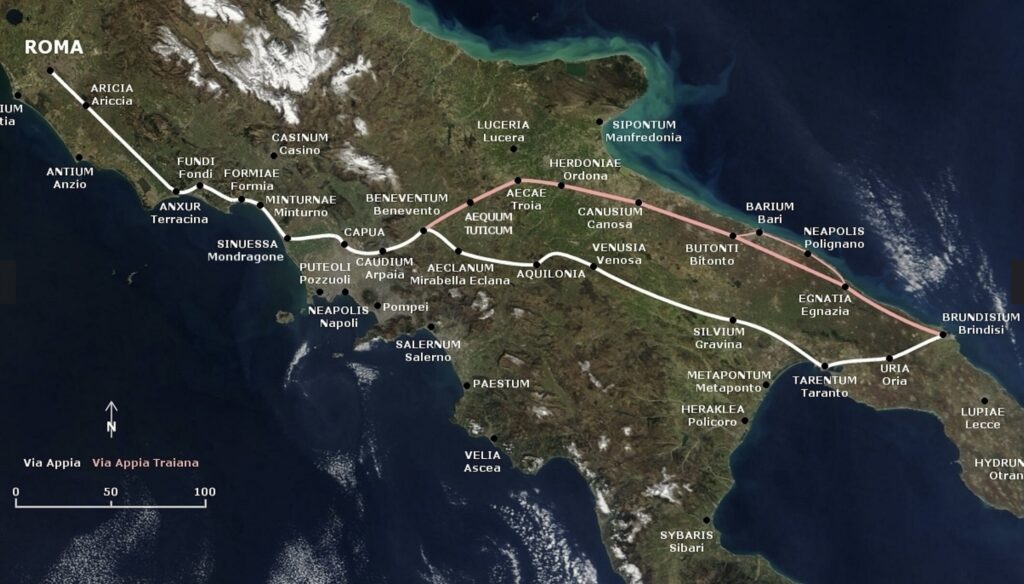
Origins
The Appian Way, known as “Via Appia” in Latin, was initiated in 312 BC by Appius Claudius Caecus, a Roman censor. Its creation was driven by military and strategic needs, particularly during the Second Samnite War. The road was designed to facilitate the rapid movement of Roman troops and supplies, thus consolidating Rome’s control over the Italian peninsula.
Early History
The initial phase of the Appian Way connected Rome to Capua, a distance of approximately 132 miles (213 kilometers). It quickly became a vital route for military and economic activities. Its construction was a remarkable engineering feat, with the road being paved with large, flat stones, and featuring a sophisticated drainage system to prevent water damage.
Expansion and Development
Over time, the Appian Way was extended to reach Brindisi, a crucial port city in southeastern Italy. This extension, completed by the late 3rd century BC, brought the total length of the road to about 350 miles (563 kilometers). The road’s development included the construction of milestones, rest stops, and other infrastructure to support travelers.
Architectural and Engineering Innovations
The Appian Way is renowned for its engineering innovations. It was constructed using a multi-layer approach: a foundation of heavy stones, a middle layer of smaller stones and gravel, and a top layer of tightly fitting paving stones. This method ensured durability and a relatively smooth surface. The road also featured bridges and viaducts to traverse rivers and valleys, showcasing Roman engineering prowess.
Significance in Roman History
The Appian Way played a critical role in the expansion and maintenance of the Roman Empire. It facilitated not only military campaigns but also trade and cultural exchange. The road enabled the efficient movement of goods, people, and ideas, contributing to the economic and cultural integration of the empire.
Decline and Legacy
With the fall of the Roman Empire, the Appian Way fell into disrepair. However, its significance was never forgotten. In the Middle Ages, parts of the road were maintained and used, and it became a pilgrimage route. In modern times, the Appian Way is a symbol of Roman engineering and historical legacy. Portions of the road are preserved as archaeological sites and attract numerous visitors and scholars interested in Roman history and engineering.
Modern Preservation
Today, the Appian Way is a protected archaeological site, with parts of the original road still visible and accessible to the public. Efforts are ongoing to preserve and restore the road, highlighting its historical importance and ensuring that future generations can appreciate this remarkable achievement of ancient engineering.
Overall, the Appian Way stands as a testament to the ingenuity and ambition of Roman civilization, reflecting their capacity for large-scale infrastructure projects and their enduring impact on the world.
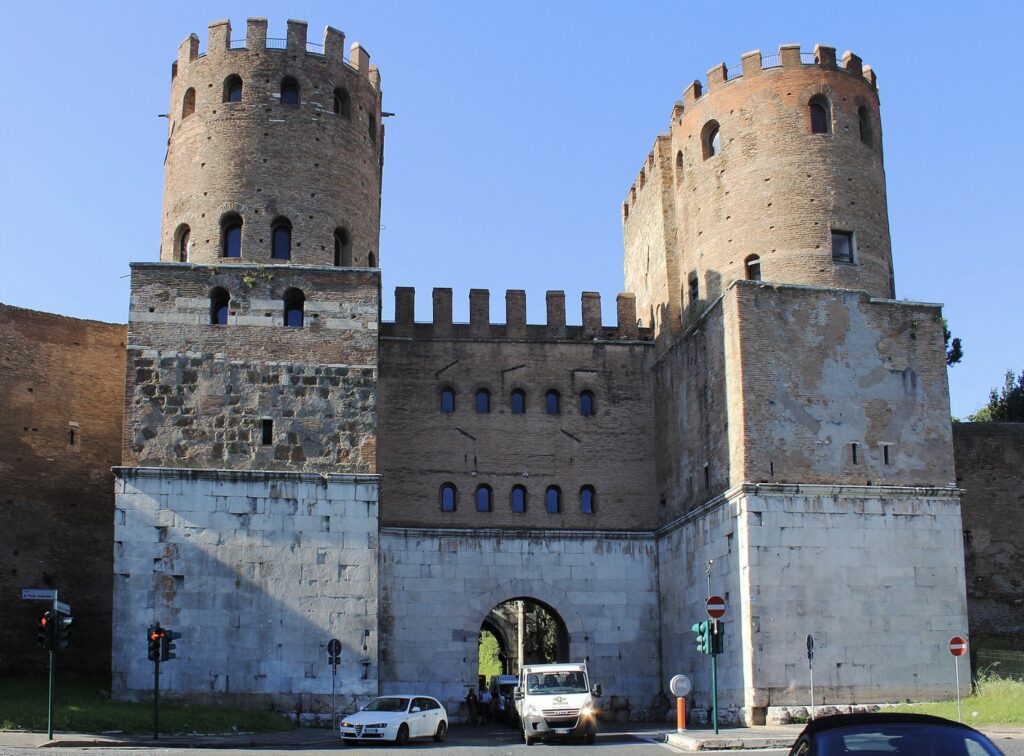
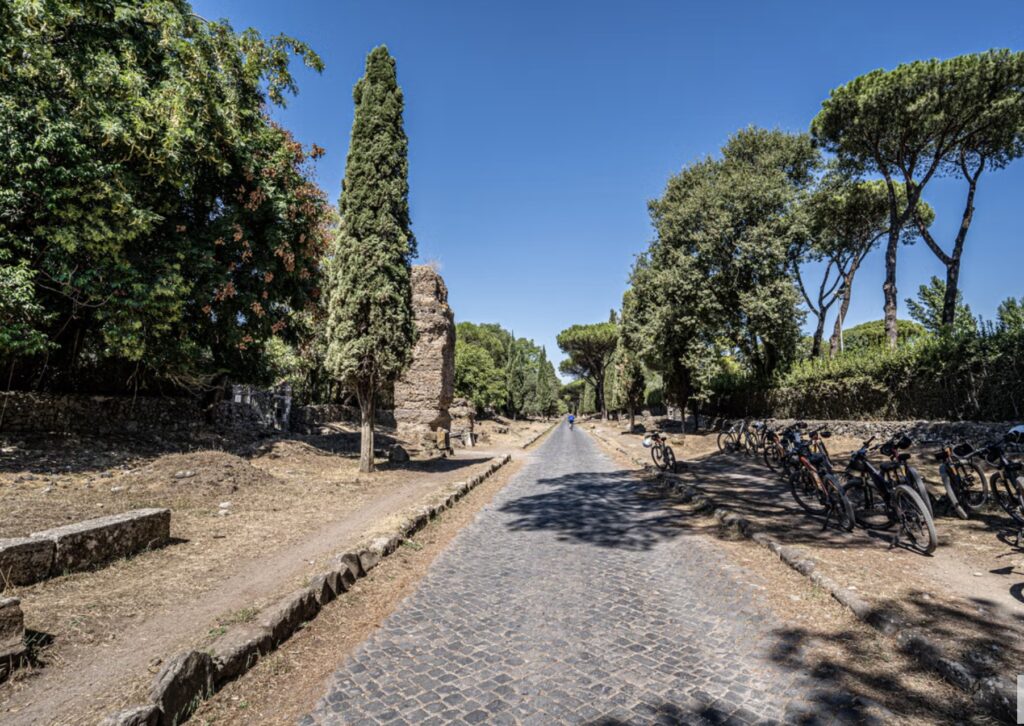
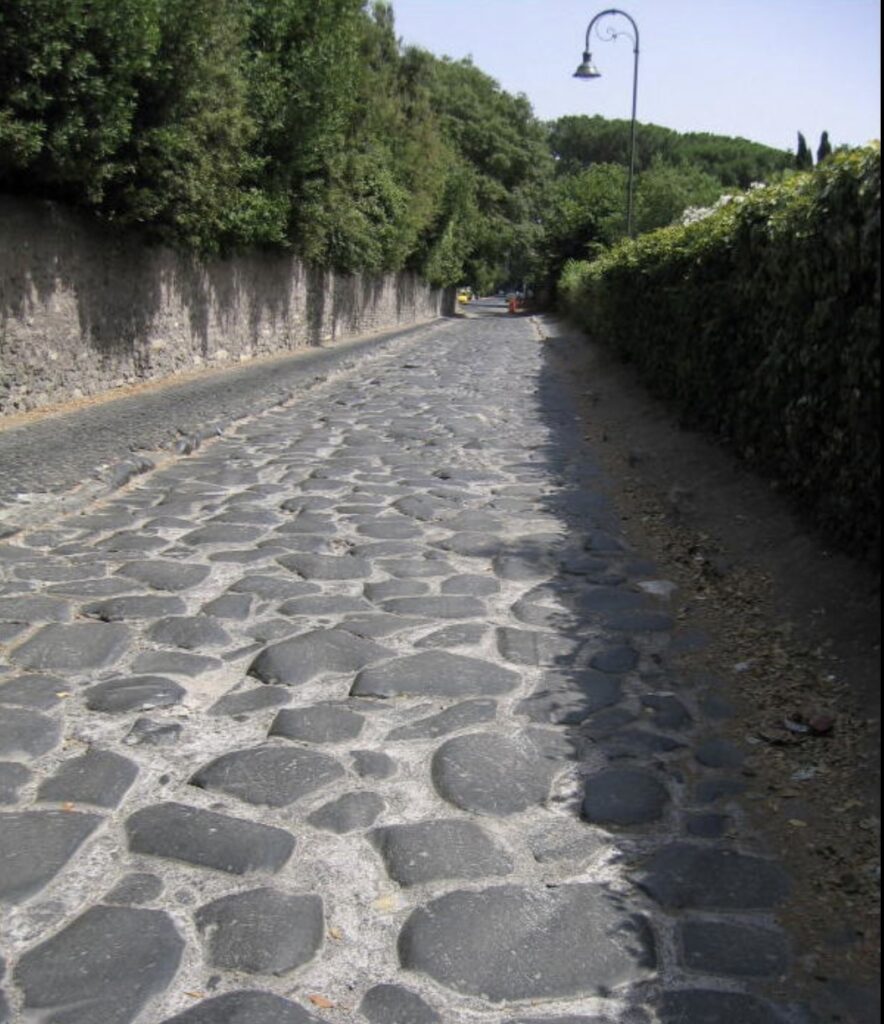
Overview of the Samnite Wars
The Samnite Wars were a series of three conflicts fought between the Roman Republic and the Samnites, an Italic tribe in central and southern Italy. These wars took place over a period of about 50 years, from 343 BC to 290 BC, and were crucial in establishing Roman dominance over the Italian peninsula.
First Samnite War (343-341 BC)
Background: The First Samnite War began due to Rome’s intervention in a conflict between the Samnites and the Campanians. The Campanians sought Rome’s help against Samnite aggression.
Key Events:
- Rome achieved significant victories at the battles of Mount Gaurus and Suessula.
- The war ended with a negotiated peace treaty. Rome gained the allegiance of the Campanians but did not significantly alter the balance of power in the region.
Second Samnite War (326-304 BC)
Background: The Second Samnite War was more extensive and complex, triggered by Rome’s establishment of a colony at Fregellae, which threatened Samnite interests.
Key Events:
- Early in the war, the Samnites achieved a major victory at the Battle of the Caudine Forks in 321 BC, where they trapped and humiliated a Roman army.
- Despite setbacks, Rome rebuilt its forces and continued the war, gradually wearing down the Samnites.
- Major battles included the Battle of Lautulae (315 BC) and the Battle of Bovianum (305 BC).
- The war concluded with the Roman victory, and the Samnites were forced to acknowledge Roman supremacy.
Third Samnite War (298-290 BC)
Background: The Third Samnite War was part of a larger coalition war, as the Samnites allied with the Etruscans, Umbrians, and Gauls against Rome.
Key Events:
- The decisive Battle of Sentinum in 295 BC saw Rome achieving a significant victory against the coalition forces.
- Following this defeat, the Samnite resistance weakened, and Rome conducted several campaigns to subdue the remaining Samnite strongholds.
- The war ended in 290 BC with a definitive Roman victory. The Samnites were finally incorporated into the Roman state, losing their independence.
Consequences and Legacy
- Roman Dominance: The conclusion of the Samnite Wars marked the consolidation of Roman control over central and southern Italy, paving the way for further expansion.
- Military Evolution: The wars contributed to the evolution of the Roman military system, leading to improvements in tactics, organization, and infrastructure, such as the construction of roads like the Appian Way.
- Political Integration: The incorporation of the Samnites and other Italic peoples into the Roman state laid the groundwork for the Romanization of Italy, which included granting varying degrees of citizenship and integrating them into the Roman political and social systems.
Overall Significance
The Samnite Wars were instrumental in Rome’s rise as a dominant power in Italy. They demonstrated Rome’s resilience, strategic acumen, and ability to integrate conquered peoples, setting the stage for the eventual establishment of the Roman Empire.
Key Locations Where the Appian Way Is Still Visible and Visited
- Rome (Via Appia Antica)
- The most famous and accessible stretch begins near the Baths of Caracalla and extends to the outskirts of Rome. Key sites include the Catacombs of San Callisto and San Sebastiano, the Circus of Maxentius, and the Mausoleum of Cecilia Metella.
- Ciampino
- This suburb of Rome offers visible sections of the Appian Way, showcasing the original basalt paving stones.
- Albano Laziale
- Located in the Alban Hills, this area includes the ancient town of Aricia, where remnants of the road can be seen.
- Velletri
- Another historic town along the route with sections of the Appian Way visible.
- Terracina
- Here, the road descends from the mountains and passes through the ancient town, where visitors can see well-preserved sections of the original road.
- Formia
- A coastal town where remnants of the Appian Way are visible, including some ancient Roman ruins.
- Minturno
- The ancient ruins of Minturnae are located here, with portions of the road and other Roman structures.
- Capua
- Near the modern city of Santa Maria Capua Vetere, the Appian Way’s course is still visible, including the remains of an ancient Roman amphitheater.
- Benevento
- This town contains sections of the Appian Way, along with other Roman landmarks such as the Arch of Trajan.
- Venosa
- In this ancient town, visitors can see sections of the road and nearby Roman ruins.
- Taranto
- The road passes through this historic city, with some visible remnants of the Appian Way.
- Brindisi
- The terminus of the Appian Way, where the road reached the Adriatic Sea. Visitors can see the Roman columns marking the end of the road.
These locations highlight the enduring legacy of the Appian Way and its importance in Roman history. The visible sections provide a tangible connection to the ancient world and are popular destinations for tourists and history enthusiasts.
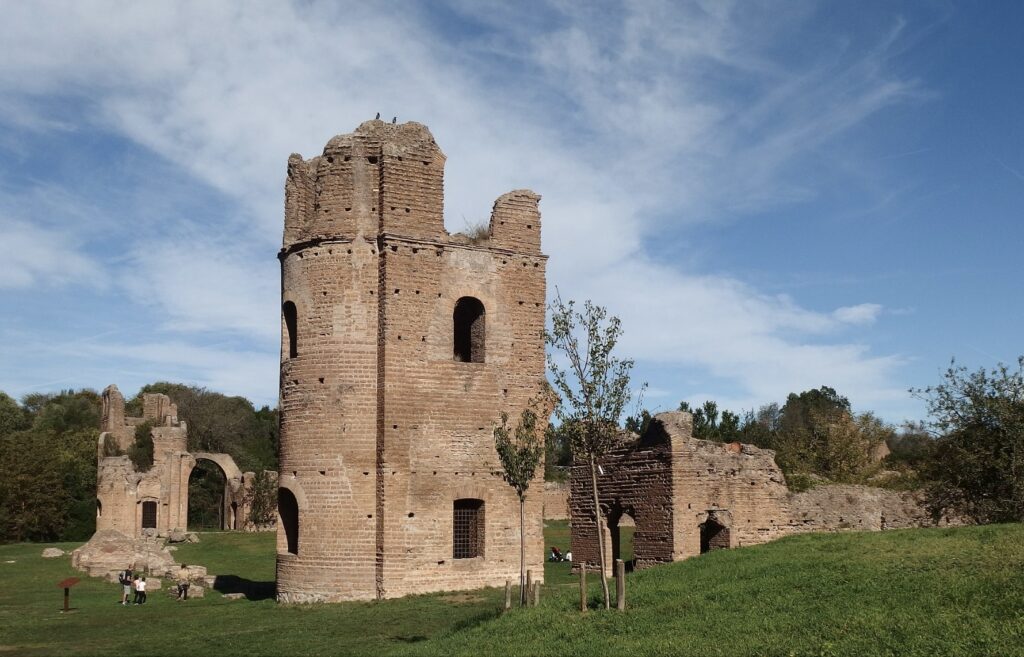
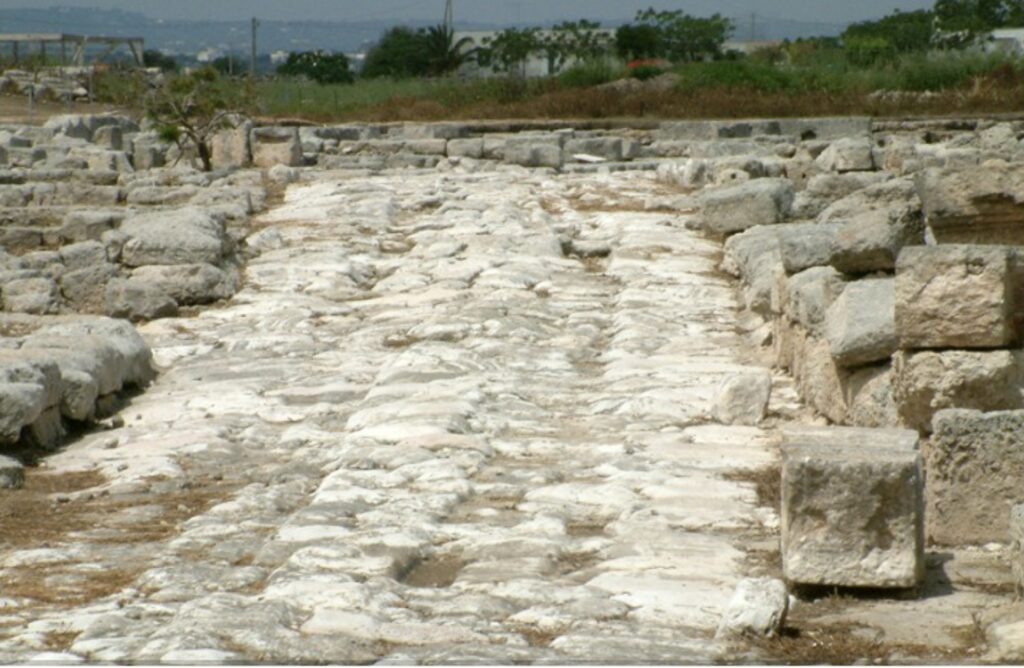
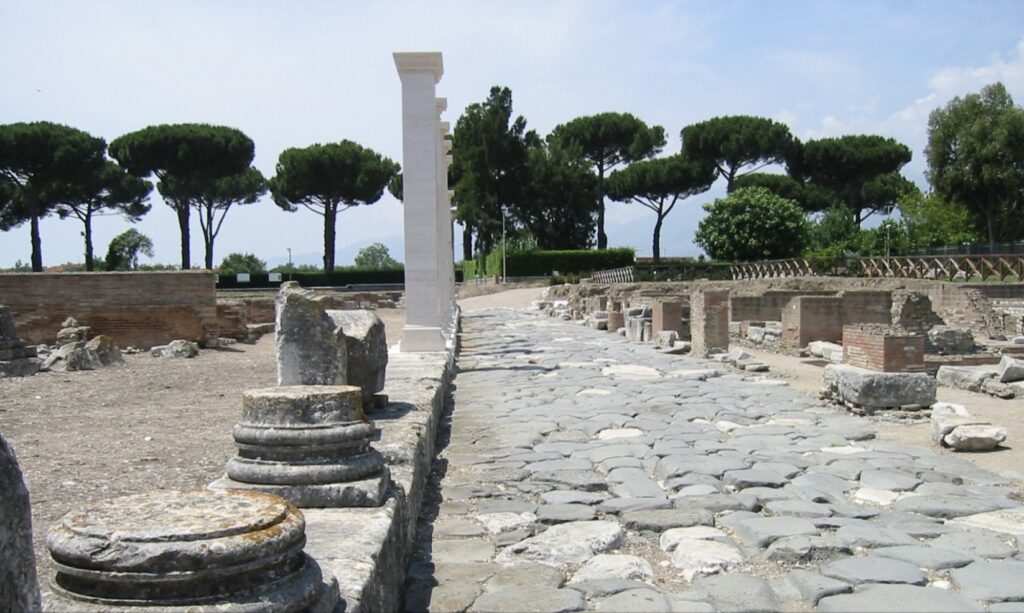
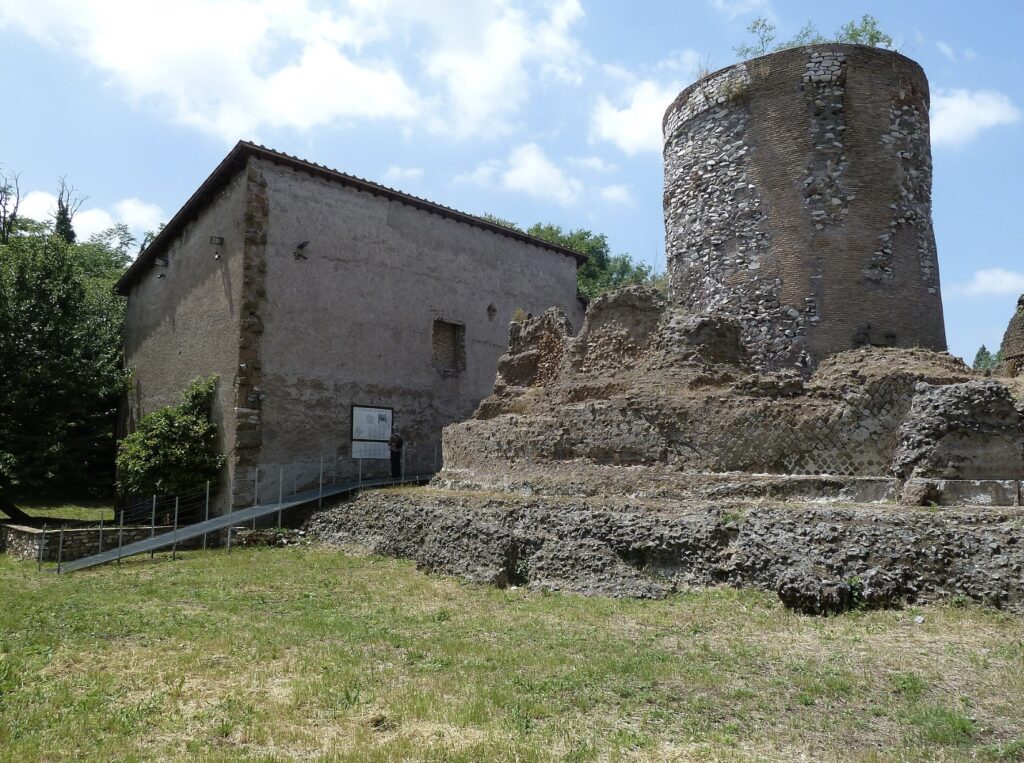
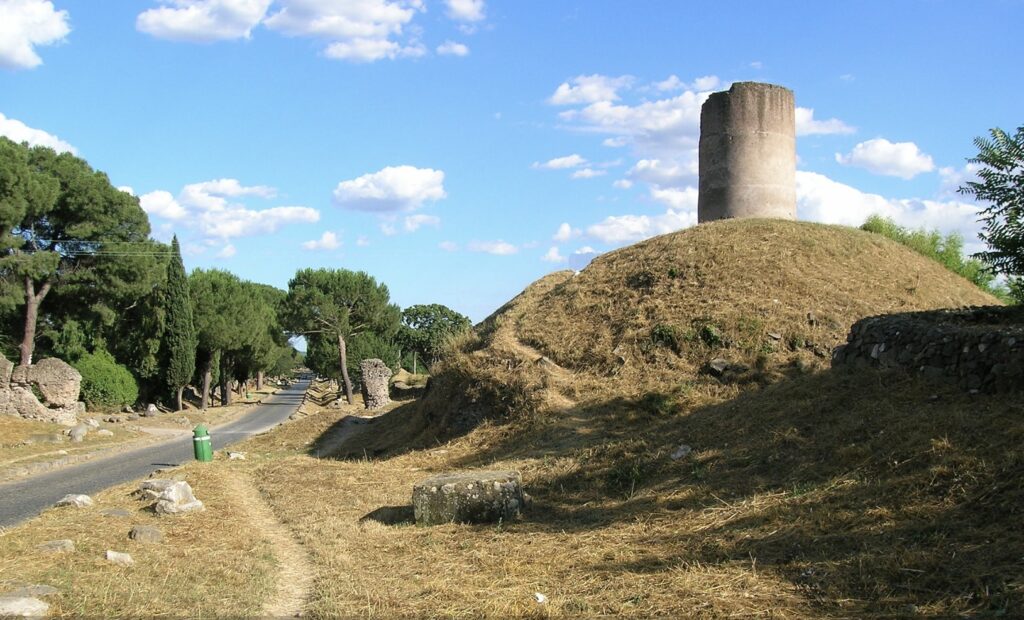
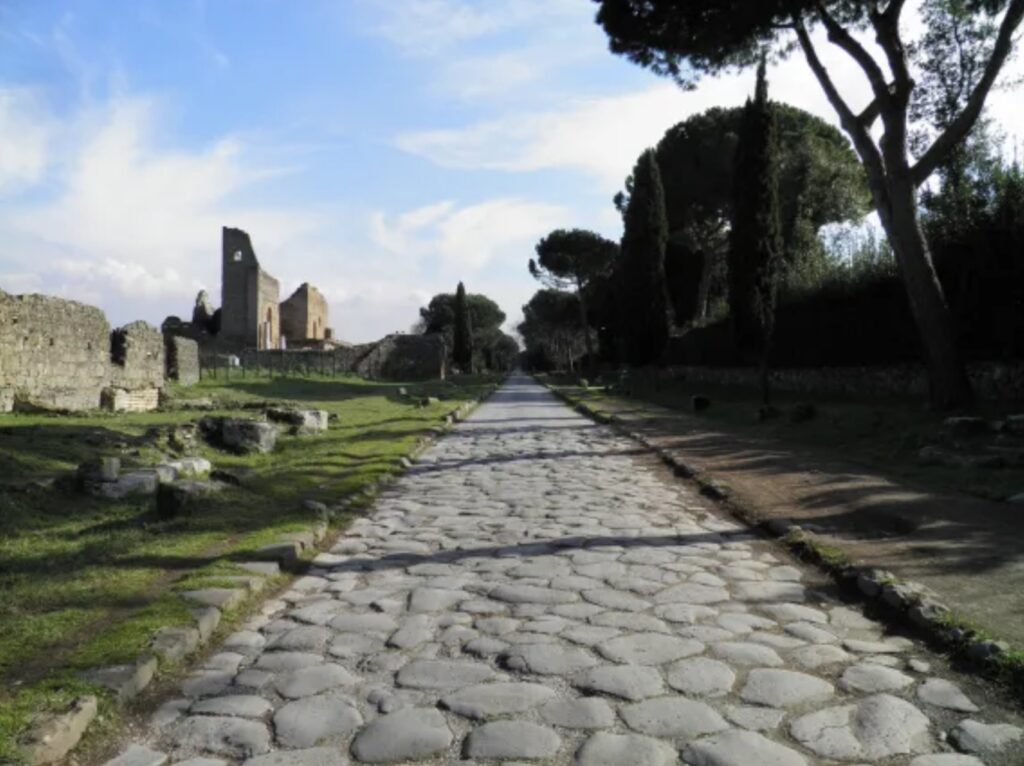
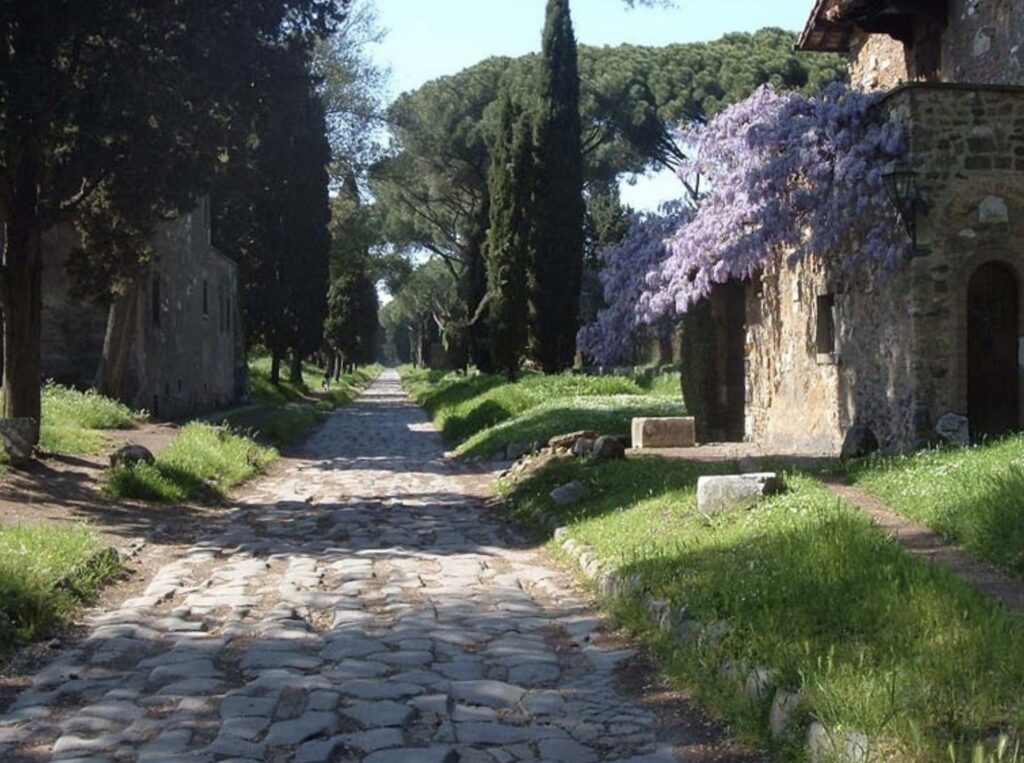
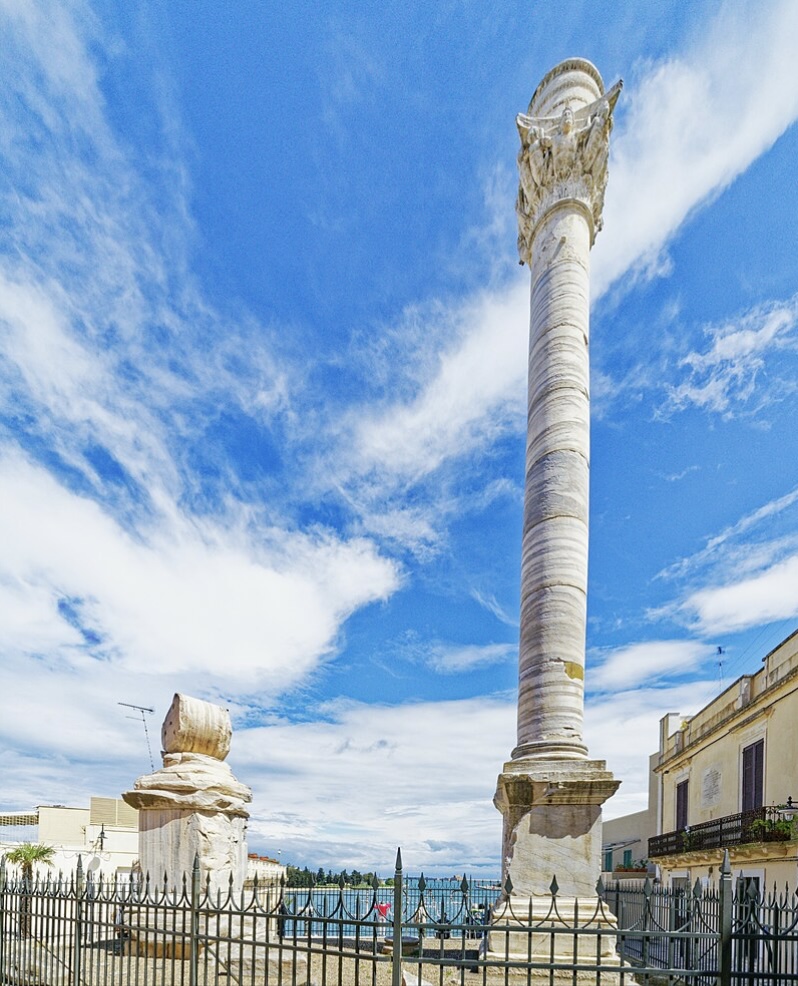
Two-Week Walking Itinerary Along the Appian Way with Corrected Mileages and Local Food Specialties
Day 1: Rome to Castel Gandolfo
- Mileage: 25 km (15.5 miles)
- Highlights: Baths of Caracalla, Catacombs of San Callisto and San Sebastiano, Circus of Maxentius, Mausoleum of Cecilia Metella.
- Local Food Specialty: Roman pizza (thin crust), Cacio e Pepe pasta.
- Overnight in Castel Gandolfo.
Day 2: Castel Gandolfo to Velletri
- Mileage: 22 km (13.7 miles)
- Highlights: Albano Laziale (Church of Santa Maria della Rotonda, ruins of Aricia), Velletri (historical center).
- Local Food Specialty: Porchetta (roast pork), local wines from Castelli Romani.
- Overnight in Velletri.
Day 3: Velletri to Cori
- Mileage: 20 km (12.4 miles)
- Highlights: Explore Cori, visit the Temple of Hercules.
- Local Food Specialty: Olive oil from Cori, Cori DOC wine.
- Overnight in Cori.
Day 4: Cori to Sezze
- Mileage: 24 km (14.9 miles)
- Highlights: Explore the ancient town of Sezze.
- Local Food Specialty: Carciofi alla Giudia (Jewish-style artichokes).
- Overnight in Sezze.
Day 5: Sezze to Terracina
- Mileage: 30 km (18.6 miles)
- Highlights: Temple of Jupiter Anxur, coastal views.
- Local Food Specialty: Spaghetti alle vongole (spaghetti with clams).
- Overnight in Terracina.
Day 6: Terracina to Fondi
- Mileage: 20 km (12.4 miles)
- Highlights: Medieval castle, old town of Fondi.
- Local Food Specialty: Mozzarella di Bufala (buffalo mozzarella).
- Overnight in Fondi.
Day 7: Fondi to Formia
- Mileage: 30 km (18.6 miles)
- Highlights: Visit Itri, explore the medieval castle, Ancient Roman ruins, Tomb of Cicero in Formia.
- Local Food Specialty: Gaeta olives, Tiella (savory pie).
- Overnight in Formia.
Day 8: Formia to Minturno
- Mileage: 18 km (11.2 miles)
- Highlights: Archaeological site of Minturnae, ancient theater.
- Local Food Specialty: Seafood dishes, Scauratielli (local pastries).
- Overnight in Minturno.
Day 9: Minturno to Sessa Aurunca
- Mileage: 18 km (11.2 miles)
- Highlights: Explore Sessa Aurunca, visit the Roman theater and cathedral.
- Local Food Specialty: Minestra Maritata (Italian wedding soup).
- Overnight in Sessa Aurunca.
Day 10: Sessa Aurunca to Capua
- Mileage: 30 km (18.6 miles)
- Highlights: Ancient amphitheater, Museum of Ancient Capua.
- Local Food Specialty: Mozzarella di Bufala Campana, Pastiera Napoletana (traditional Neapolitan cake).
- Overnight in Capua.
Day 11: Capua to Benevento (split into two days to keep distances manageable)
- Day 11: Capua to Arpaia
- Mileage: 27 km (16.8 miles)
- Highlights: Explore the small town of Arpaia.
- Local Food Specialty: Local salumi (cured meats), Pappardelle al cinghiale (pasta with wild boar).
- Overnight in Arpaia.
- Day 12: Arpaia to Benevento
- Mileage: 30 km (18.6 miles)
- Highlights: Arch of Trajan, Roman Theater.
- Local Food Specialty: Strega liqueur, Benevento torrone (nougat).
- Overnight in Benevento.
Day 13: Benevento to Troia
- Mileage: 30 km (18.6 miles)
- Highlights: Explore the medieval town of Troia, visit the Cathedral of Troia.
- Local Food Specialty: Caciocavallo cheese, Troccoli pasta.
- Overnight in Troia.
Day 14: Troia to Brindisi (using transportation for longer segments to fit into one day)
- Plan: Use local transportation to cover longer distances as needed.
- Mileage on foot: 30 km (18.6 miles)
- Highlights: Roman columns, Brindisi Cathedral, Archaeological Museum.
- Local Food Specialty: Orecchiette pasta, seafood dishes.
- Overnight in Brindisi.
Notes
- Daily Walks: Adjusted to ensure no more than 30 km per day, with transportation used on Day 14 to reach Brindisi.
- Accommodation: Book accommodation in advance, ranging from hotels and guesthouses to bed and breakfasts.
- Local Cuisine: Enjoy the regional foods and wines along the way.
- Historical Sites: Each stop offers significant historical and archaeological sites, providing a rich cultural experience.
This itinerary ensures balanced daily walking distances, incorporates local food specialties, and concludes the journey in Brindisi on the 14th day, offering a comprehensive and enriching experience along the ancient Appian Way.

